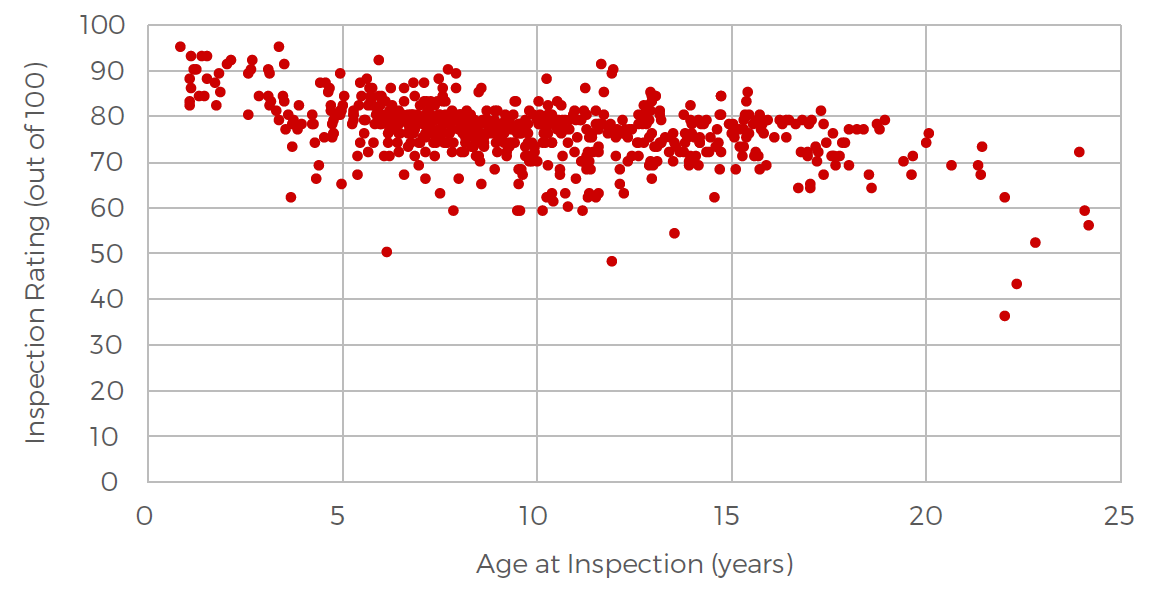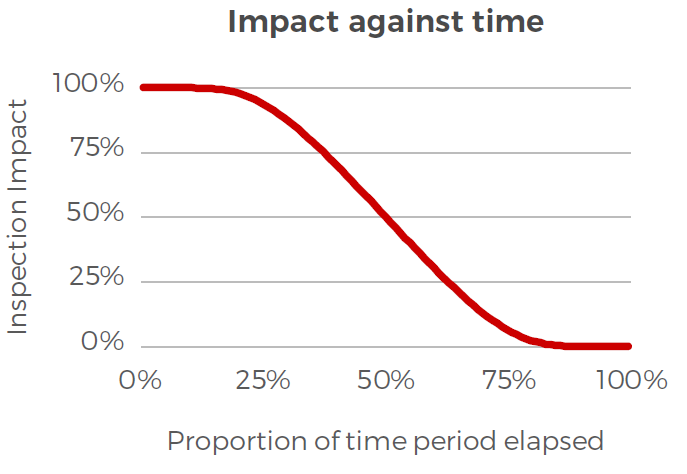Condition Adjusted Value (CAV)
The effect of condition on value has been modelled mathematically to determine the rating achieved by a typical vessel and the premium or discount that should be applied to the value of vessels achieving different ratings.
Introduction
By combining vessel inspection data and its proven Market Value (MV) model, VesselsValue is able to produce Condition Adjusted Values (CAV).
While the physical condition of a vessel is important to consider in a Sale and Purchase transaction, many valuers do not have access to that information. One way they may overcome this is by assuming that the vessel is in typical condition for its age and survey position. This is the assumption used by VesselsValue’s MV model. Another approach they can take is to conduct a physical inspection of the vessel or request an inspection agency to do so on their behalf.
VesselsValue uses inspection reports generated by third party inspections to calculate an appropriate adjustment to its Market Value, giving the Condition Adjusted Value.
The CAV model considers several variables including the age of the vessel at inspection, the inspection rating achieved and the recentness of inspection in order to produce an adjustment factor that provides the CAV.
Each of these is described below:
Age at Inspection
The VesselsValue MV assumes typical condition for the age of the vessel. Therefore, the model compares the condition of the vessel to what is considered typical for its age. Inspection ratings are normalized for the age
of the vessel at inspection to account for the deterioration of its condition over its lifetime.
See a sample data set below:

Sample age at inspection chart
Inspection Rating
Once the age of the vessel has been accounted for, the adjustment to the value attributed to the vessel’s condition can be calculated. The effect of vessel condition on value has been modelled mathematically to determine the rating achieved by a typical vessel and the premium or discount that should be applied to the value of vessels achieving different ratings.
Recentness of Inspection
Recentness is the time that has elapsed since the inspection took place. The greater the amount of time that has passed, the less bearing the inspection report has on the current condition of the vessel. The impact on value of the results of the inspection should therefore be reduced over time. After enough time has passed, the report is considered to have no bearing on the current condition of the vessel, the impact will have decayed to zero, and the value will be calculated assuming typical condition.

Sample impact against time chart
Demolition and Newbuilding
The CAV model assumes that when a vessel achieves an extremely low rating it will still be worth at least its scrap price. Similarly, a vessel that is in extremely good condition will not be worth more than a completely new vessel of the same specifications.
How Can I get a Condition adjusted Value for my vessel?
In order to produce a CAV, VesselsValue will need to be provided a condition inspection report for the vessel. We collect inspection data through our partnership will Idwal Marine, however to include an inspection report from an other third party this can be provided to us directly. We can then get this processed into a condition score which the valuation model will be able to use to produce a CAV.
